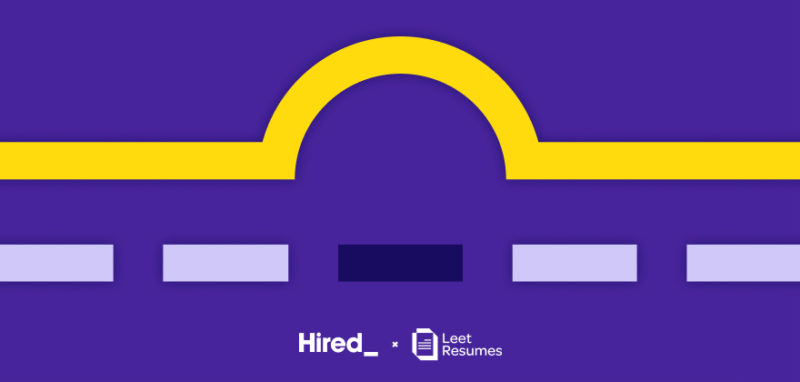
Why You Should Consider a Lateral Move for Career Growth
If you’re focused on advancing up the career growth ladder, a lateral move to another company might seem counterintuitive. However, there are several arguments for it – particularly in today’s dynamic job landscape.
Read on for key reasons why taking the lateral move opportunity might actually be more beneficial than staying in your swim lane.
Become a T-shaped employeeAs with many buzzwords, the concept of a ‘T-shaped’ employee appears to have originated at McKinsey. T-shaped individuals have deep expertise in one area. They also bring a broader skill set to the table while making connections between the various functions and ideologies they’re familiar with.
The counter to a T-shaped employee is ‘I-shaped’, or a narrow specialist. Specialists play an essential role in many organizations. But employers are increasingly realizing the value of employees who bring diverse experiences and points of view to the table.
You may be banking on earning that next promotion in your current role. However, a lateral career move offers an opportunity to develop a more T-shaped skill set. This allows you to not only learn new hard skills but also gain an understanding of how different departments and roles fit into the broader organization.
As the hiring market shifts toward more skills-based hiring, use this to your advantage. The next time you’re looking for a position with a new company, expanding the types of jobs you might be eligible for and increasing your fluency in multiple business languages is something to consider.
In the tech industry, where innovation is rapid and job roles frequently evolve, a broad skill set will always be highly advantageous. By making a lateral move, you gain exposure to new technologies, methodologies, and frameworks, increasing your versatility and marketability.
Related: What are the Best Programming Languages to Get a Software Developer Job? (Video)
Let’s say you’re a software engineer making a lateral move into product management. This shift may increase the competitiveness of your profile for future engineering jobs. Many employers are excited to find engineers who understand the product management function and know how to work effectively with these colleagues. The same goes for transitioning into data science if you’re looking for a role more closely involved with the business side of the organization.
Avoid burnoutIf you’ve been in the same type of role for a while, things can easily start to feel repetitive or lack the element of challenge. Eventually, it will lead to burnout if you don’t feel engaged at work. A lateral move can be an effective way to switch things up when an upward move isn’t in the near-term cards. It might even increase your earning potential if the move makes you more engaged – and therefore, a better performer.
While looking for roles with a new company is one way to combat burnout, a lateral move can be just as effective – or even more preferable if it helps you discover a job function you’re happier in. Before jumping straight into the external job hunt, consider which job functions interest you. Explore whether those opportunities are available with your current company.
Build your networkColleagues are often some of the most valuable professional connections you’ll make. They not only know you as a person but can also vouch for your credibility and work ethic. Between new colleagues and a new manager, a lateral move may help expand your network beyond your old team and set you up for success as your career grows.
That said, if you do move internally, do what you can to preserve the relationships with your old colleagues. It will be exciting to start something new. However, you want to avoid burning bridges. Check in with old team members periodically to keep the relationships strong.
Consider factors beyond salaryUpward career moves are more often accompanied by higher salaries and correlated with ‘career success’ than lateral moves. But keep in mind the other factors impacting how happy you are at work.
Is work-life balance high on your list of priorities? If so, it might be worth looking into which teams at your organization offer more flexible hours. On the other hand, maybe you’re looking for mentorship and it’s not provided by your current manager. There might be a leader on a different team who would better facilitate your career growth.
Rethinking the path to career growthRegardless of your reasoning for considering a lateral career move, rest assured that upward isn’t the only way to achieve career growth – particularly in an increasingly competitive job landscape with more and more well-rounded employees to choose from.
In addition, moving between teams in a company is often easier once you’ve established some trust and credibility within the organization. Don’t forget to consider potential lateral moves as you think about your next career play!
Originally published May 2018. Updated by Hired Content Team July 2023.
Related blog posts

How to Ask About Growth Opportunities During an Interview
Growth Opportunities Can Make or Break Your Next Role More than 30 years ago, Dr. Carol Dweck...

How to Handle an Employment Gap on Your Resume (Flip the Script!)
You’re not your work history Addressing an employment gap on a resume is one of the most...

Part of a Layoff? Steps Jobseekers in Tech & Sales Need to Take First
Chapter 1 of a series to help jobseekers bounce back better than ever (or to feel better prepared...

Thinking About a Career Transition? General Assembly’s 4 Immersive Tech Programs to Help You Pivot
Have you ever considered a career change? Perhaps, you’ve daydreamed about making a transition...
Leaders Share Tips to Build Career Resilience as a Woman in Tech
No career journey is complete without some level of uncertainty along the way. Discover tools to...

Want to Ace Behavioral Interviews? A Guide to Prep Jobseekers
No matter the role, employers want to know you’re curious, hard-working, and most...

